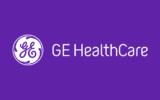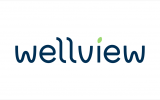Advice: Uniting Healthcare Excellence with Graphic Design and Branding
In today’s digital age, the healthcare industry is embracing the power of graphic design and branding to effectively communicate with patients, establish trust, and create memorable experiences.
The digital landscape has opened up new avenues for healthcare providers to connect with their audience, deliver information, and enhance patient engagement.
What Is A Digital Landscape?
The digital landscape refers to the vast and ever-evolving digital environment in which individuals interact, communicate, and consume information.
It encompasses various digital platforms, channels, and technologies that shape the way people engage with content, including websites, social media, mobile apps, and digital advertising.
Understanding the digital landscape is crucial for healthcare organisations as it provides a foundation for effectively leveraging graphic design and branding to engage with patients and stakeholders.
The Significance of Graphic Design in Healthcare
Establishing a Professional and Credible Image
- Consistent Branding: Develop a cohesive brand identity that represents your healthcare organisation’s values, mission, and unique offerings. This includes designing a recognisable logo, selecting consistent colour palettes, and choosing appropriate fonts for all digital touchpoints.
- Visual Communication: Utilise graphic design to effectively communicate complex medical information to patients and the general public. Use clear and visually appealing infographics, charts, and illustrations to simplify healthcare concepts and enhance understanding.
Enhancing User Experience and Engagement
- User-Centric Design: Create user-friendly interfaces and intuitive navigation systems that prioritise user experience. Optimise website layouts, mobile app interfaces, and patient portals to provide easy access to information and seamless interactions.
- Emotional Connection: Incorporate visual elements that evoke positive emotions and create a sense of trust and empathy. Use relevant imagery and human-centred design principles to connect with patients on a deeper level.
Promoting Health and Wellness
Educational Materials: Design engaging and informative educational materials such as brochures, flyers, and digital content that promote health and wellness. Use compelling visuals to capture attention and convey key messages effectively. Consider the following:
- Use clear and concise language to present health information in a user-friendly manner.
- Incorporate visuals that depict healthy behaviours, preventive measures, and positive lifestyle choices.
Digital Campaigns
Leverage graphic design to develop impactful digital campaigns aimed at raising awareness about specific health issues, preventive measures, and healthy lifestyles.
Create visually compelling visuals, videos, and social media content to drive engagement and encourage positive behavioural changes. Consider the following:
- Define the goals and objectives of your digital campaigns to ensure alignment with your health promotion initiatives.
- Use storytelling techniques, testimonials, and relatable scenarios to engage your audience and inspire them to take action.
The Role of Branding in Healthcare
Building Trust and Recognition
Consistent Branding Elements
Establish consistent brand elements across all digital platforms, including logos, taglines, colour schemes, and brand voice. This consistency builds recognition and trust in your healthcare organisation.
- Develop brand guidelines that outline the proper usage of logos, colors, typography, and other visual elements across various digital touchpoints.
- Ensure that your branding elements align with your organization’s values and resonate with your target audience.
Positive Reputation
Use branding strategies to highlight your healthcare organisation’s strengths, achievements, and unique qualities. Develop a reputation as a trusted provider of high-quality healthcare services through consistent branding efforts.
- Showcase success stories, patient testimonials, and quality certifications to demonstrate your organisation’s credibility and expertise.
- Engage in community initiatives and partnerships that align with your brand values, further enhancing your positive reputation.
Patient Experience and LoyaltyPersonalised Brand Experience
Create a personalised brand experience for patients by tailoring communications, visuals, and interactions to their specific needs and preferences. This fosters a sense of loyalty and encourages patients to choose your healthcare organisation for their healthcare needs.
- Use marketing automation tools to deliver personalised messages and content based on patient preferences, demographics, and healthcare history.
- Implement patient feedback mechanisms to gather insights and continuously improve the patient experience.
Consistent Messaging
Deliver consistent messaging that aligns with your brand values and resonates with patients. Ensure that all communication channels, from websites to social media, convey a unified brand voice and messaging.
- Develop a brand messaging framework that clearly defines your organisation’s unique value proposition and key brand messages.
- Train staff members to consistently communicate the brand’s messaging and values in all patient interactions.
Actionable Insights for Healthcare Organisations
Understand Your Target Audience
Patient Personas
Develop detailed patient personas to understand the demographics, preferences, and needs of your target audience. Use this information to tailor your graphic design and branding efforts accordingly.
- Conduct market research, surveys, and interviews to gather data and insights about your target audience.
- Use the personas to guide decision-making processes related to design choices, messaging, and content creation.
User Research
Conduct user research to gain insights into how patients engage with your digital platforms. Collect feedback, analyse user behaviour, and make data-driven decisions to optimise the user experience.
- Utilise usability testing, heat mapping, and analytics tools to understand how patients interact with your website, mobile app, and other digital platforms.
- Identify pain points, bottlenecks, and areas for improvement to enhance the user experience.
Collaborate with Design ProfessionalsGraphic Design Expertise
Collaborate with experienced graphic designers who specialise in healthcare branding and digital design. Their expertise can help you create visually appealing and effective designs that resonate with your target audience.
- Seek designers who have a strong understanding of healthcare industry trends, regulations, and best practices.
- Communicate your brand vision, goals, and requirements clearly to the designers to ensure alignment and effective collaboration.
User-Centred Design Approach
Adopt a user-centred design approach that puts the needs and preferences of patients at the forefront. Design professionals can guide you in developing user-friendly interfaces, engaging visuals, and cohesive brand experiences.
- Conduct user testing sessions to gather feedback on design prototypes and iterate based on user insights.
- Involve patients and other stakeholders in the design process to ensure their perspectives are considered.
Consistently Monitor and EvolveAnalytics and Feedback
Utilise analytics tools and gather patient feedback to track the performance of your digital platforms, campaigns, and branding efforts. Continuously monitor metrics and make data-driven improvements to optimise the patient experience.
- Set up analytics tracking to measure website traffic, user engagement, conversion rates, and other relevant metrics.
- Encourage patients to provide feedback through surveys, online reviews, and social media platforms.
Stay Updated
Keep abreast of the latest trends in graphic design, branding, and the digital landscape. Adapt your strategies and design elements to align with evolving patient expectations and industry best practices.
- Follow industry publications, attend conferences, and engage in professional networks to stay informed about emerging trends and innovations.
- Regularly review and update your branding guidelines to ensure they reflect the current digital landscape and best practices.
By incorporating these actionable insights into your healthcare organisation’s strategy, you can effectively promote health and wellness, build trust and recognition through branding, understand your target audience, collaborate with design professionals, and continuously monitor and evolve your digital efforts.
Final Remarks
In the digital landscape, healthcare organisations have a unique opportunity to leverage graphic design and branding to enhance patient experiences, establish trust, and effectively communicate their message.
By understanding the digital landscape, recognising the significance of graphic design and branding in healthcare, and implementing actionable insights, healthcare organisations can navigate the digital space with excellence and create meaningful connections with patients.
Embrace the power of graphic design and branding to elevate your healthcare organisation’s digital presence and deliver exceptional patient experiences.








